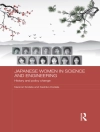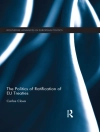In the absence of accurate information, American culture has upheld a distorted view of what it means to be an older gay man. Gay and Gray is the first and only scholarly full-length treatment of older gay men in America today. It breaks the stereotype that older gay men are strange, lonely creatures and reveals that most older gay men are well-adjusted to their homosexuality and the aging process.This second edition contains four new chapters that present additional perspectives on the reality of gay aging. Dr. Minnigerode’s study shows that older gay men do not perceive themselves as growing old faster than their heterosexual counterparts, and that forty is the age at which most gay men believe that the label "young" no longer applies–this finding led Berger and other researchers to define "older" gay men as those over forty. Pope and Schulz confirm Berger’s finding that for most older gay men a continuation of sexual activity and sexual enjoyment is the norm. John Grube’s paper on the interaction of older gay men with younger gay liberationists explores the cultural divide between today’s older gay man and his younger counterpart, filling a gap left in the first edition. And a concluding chapter by Richard Friend on a theory of successful gay aging summarizes much of the current thinking about this topic. The true situation of the older homosexual male presented in Gay and Gray challenges preconceptions about what it means to be old and gay. It asserts that in most ways, older gay men are indistinguishable from other older people. Because the book portrays older gay men in a realistic and sympathetic light, it is therapeutic for the many gay men who have been burdened with society’s negative and distorted views about them. These men may compare their own lives to those of the respondents described in the book. Gay and Gray offers younger gay men a rare glimpse into their futures and enlightens and comforts those who count older gay men among their family and friends. The conclusions drawn in the book will change people’s perspectives and offer new ways of thinking for and about older gay men.Gay and Gray is filled with rich case histories and treats its subject with dignity and compassion. Topics of focus include: love relationships social and psychological adjustment gay community self-acceptance being "in the closet" and "coming out" as a gay person intergenerational attitudes popular stereotypes As the first intensive interview and questionnaire study of gay men aged 40 and older in America, Gay and Gray examines the lives of these men in light of cultural stereotypes. Author Berger asks about the social lives of these men, their involvement in both the heterosexual and homosexual communities, their "coming out" experiences, their attitudes about younger gays, their experiences in growing older, and their strategies for adapting to life’s challenges. In the study, Berger reveals that, contrary to stereotypic views, most older gay men are well-integrated into social networks and lead active and generally satisfying lives. He found that few live alone; most scored as well as younger gays on measures of psychological adjustment, such as self-acceptance; many are open about their homosexuality with family, friends, and colleagues; and the most well-adjusted older gay men were integrated into a homosexual community, associated with younger gay men, and were unwilling to change their sexual orientation.
Raymond Berger
Gay and Gray [PDF ebook]
The Older Homosexual Man, Second Edition
Gay and Gray [PDF ebook]
The Older Homosexual Man, Second Edition
Köp den här e-boken och få 1 till GRATIS!
Språk Engelska ● Formatera PDF ● Sidor 354 ● ISBN 9781136591945 ● Utgivare Taylor and Francis ● Publicerad 2013 ● Nedladdningsbara 6 gånger ● Valuta EUR ● ID 2650497 ● Kopieringsskydd Adobe DRM
Kräver en DRM-kapabel e-läsare












